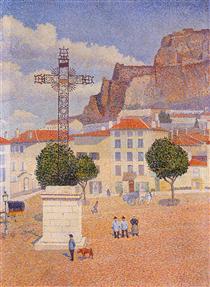
1846 - 1890
Albert Dubois-Pillet
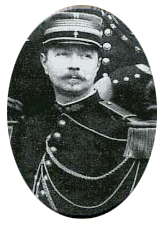
description
A military officer and self-taught artist, Louis-Auguste-Albert Dubois-Pillet was not particularly noticeable amongst other prominent Neo-impressionists, but was one of the first followers of pointillism and did much for the development of avant-garde art.
Albert Dubois began his career as a military officer and served in the army for the rest of his life. However, this did not prevent him from becoming a talented artist, and one of the first followers of pointillism. The artist even changed his name a little, adding his mother’s maiden name to it, so that those in the service wouldn’t find out about his artistic life. He began to sign his works as “Dubois-Pillet”.
Despite the fact that the artist did not have any special degree, he proved to be a talented painter, with a subtle sense of color and composition. Several of his still lifes were favorably received at the Paris Salon in 1877 and in 1879. After moving to Paris, Dubois-Pillet created more avant-garde works that were rejected by the Salon. Realizing that his paintings in this orientation would not be exhibited, the artist, along with other painters, pondered about the creation of an alternative exhibition. Therefore, in 1884, the Société des Artistes Indépendants (Society of Independent Artists) was created by Dubois, P. Signac, G. Seurat, H. Cross and O. Redon.
Dubois was the author of the group’s statute and regularly exhibited his paintings at the Salon, together with G. Seurat, P. Signac, K. Pissarro, H. Cross, and others. The artist donated ten of his paintings to the Salon at the eighth and last exhibition of Impressionists in 1886, and nine more works the next year. He remained closely associated with the Society for the rest of his life, regularly exhibited his paintings along with them, as well as with the Belgian avant-garde group “Les XX” (“Society XX” or “Twenty”) in Brussels.
Unfortunately, only a small number of works by the author have reached us. Because of a fire that destroyed most of Dubois-Pillet’s paintings, as well as his early death, the number of his paintings in museums around the world is relatively small.
Key ideas:
– Under the influence of his friendship with G. Seurat and other Neo-Impressionists, Dubois-Pillet began to experiment with the method of color separation, and was one of the first to work in the manner of pointillism. After that, Neo-impressionism became his main artistic style.
– The artist’s works are done in strict accordance with G. Seurat’s theory of color: clear separate brushstrokes of contrasting colors, located side by side, creating an integral picture, forming bright and airy landscapes and expressive portraits.
– In his graphic works, he used pen and ink, creating skillful pointillist drawings. Even Paul Signac, a theoretician of point technology, admired these works, noting that they are painted with “photographic precision”.
1846
1867
1870
1877
1883
1884
1888
1889
1890
The Birth of the artist
Graduated from the Imperial Academy
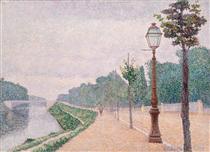
Participated in the Franco-Prussian War
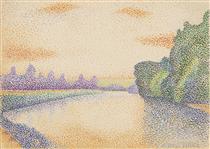
Acceptance in the official Paris Salon
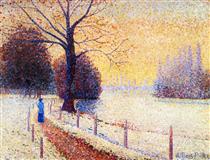
Changed his signature

The Society of Independent Artists

The personal exhibition

The commander of the gendarmerie

The Death
The artist died on the 18th of August in 1890 in Le Puy, France.

